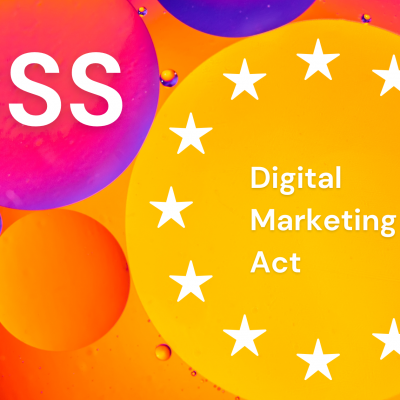In line with this are some changes to the CSS landscape. CSS stands for Comparison Shopping Services. The Google CSS Partner program was launched in 2017 post the European Commission imposing a fine on Google for competition violations. The Google CSS Partner Program essentially meant that advertisers who used a CSS to set up their Google Merchant Center gained a 20% advantage in Product Listing Ads (PLAs/Google Shopping). This practice has allowed advertisers to gain this advantage and for multiple CSSs to operate in the space without any impact on CPCs as only one ad is able to serve which directly links to an advertiser’s product page.
So what is changing and what do we know so far?
There are three fundamental changes that Google are making on the search results page to comply with the Digital Markets Act:
- Allowing CSSs to advertise using their own Product Detail Pages (PDPs) through both organic (free) product listings and paid Product Listing Ads (PLAs) which means CSS PLAs will participate in the ad auction just like advertiser PLAs.
- The addition of a new “Product Sites” filter specifically dedicated to CSSs in addition to the new “Products” filter which will feature all products including both advertisers and CSSs. There are also new “query shortcuts” being added to help people refine their search.
- Google are making the Search experience a lot more visual through the addition of new experiences for general and product specific queries, and introducing Rich Results, allowing advertisers to show a carousel of products.
How do CSS PLAs differ from the way CSS is used currently?
Currently CSS is used to gain an advantage in Search Results for advertiser PLAs (Google Shopping) and allowing advertisers to cover gaps in their coverage. In all instances the ads direct to an advertiser’s product landing page. This means that there will only be one ad per product and multiple CSSs cannot show at the same time for the same product, and therefore CPCs are unaffected.
In addition to the above, Google are now also launching CSS PLAs, where the ads will direct to the Product Detail Pages on the CSS site and Google will allow these ads to double-serve for a single product and therefore multiple CSSs can show for a single product using their own PDPs. This means the CSS sites in this case will enter the auction in a similar way to other competitors and they will directly compete with each other, impacting each other’s CPCs.
What could this mean for advertisers?
As Google have been designated as “gatekeepers” for the new regulation, they need to ensure they make changes that allow them to be compliant and this change will support them in doing this.
One of the benefits to advertisers for running CSS PLAs alongside advertiser PLAs would be to cover more space within the Search Results Page through direct to site ads and the CSS Product Detail Pages, pushing out competitors from the space. In order to test the impact of this, advertisers should restrict this activity in their affiliate programs to trusted CSS partners they work with in order to allow for active testing of opportunity in a transparent manner. This will help identify the impact of CSS PLAs on the performance of search as a channel whilst utilising low bids/commission rates to ensure that direct linking ads always take priority.
On the other hand, the change is guaranteed to have an impact on CPC inflation as CSSs and advertisers engage in direct competition within the space.
Beyond the guaranteed rise in CPC, the inclusion of CSS PLAs directed to CSS Product Detail Pages will adversely affect overall conversion rates, leading to a suboptimal user experience. Several reasons contribute to this impact:
- Allowing CSSs to show their PDPs on behalf of advertisers can distract customers away from direct advertiser product pages in the Shopping space
- CSS PDPs lack customization to align with the brand image and require an additional step for users before landing on an advertiser’s site.
- Clicking through a CSS PLA and reaching a CSS PDP does not guarantee the purchase of the clicked product or the user continuing to the advertiser’s direct site.
- CSS PDPs could potentially be promoting listings from other Merchants including sponsored listings which could actively drive users away from purchasing your product.
To navigate these changes and protect against potential drawbacks, we recommend advertisers review their affiliate terms and agreements with partners as soon as possible whilst carefully monitoring permissions granted for advertising in their space and associated commission rates. It is important to maintain control and limit testing of CSS PLAs to trusted partners so you can safely manage the risks associated with higher CPCs and lower conversion rates with the benefits of potential increased exposure and opportunity. Proactively regulating your affiliate program in alignment with these adjustments is a prudent step to stay ahead of potential challenges.
Regarding the filters labelled as “product site,” historically, users seldom clicked on these tabs. However, with recent enhancements like “query shortcuts,” there’s an increased likelihood that users will engage with these filters. This is particularly beneficial as it streamlines the search process, reducing the need for multiple searches—a notable and positive feature. Additionally, Google might opt to establish dedicated sections for Comparison sites directly on the main search results page. It is currently crucial to strive for visibility in as many slots as possible, contingent on the placement and presentation of these slots on the search results page. Our experts will persist in assessing and monitoring these developments closely.
When are these changes likely to be rolled out?
Across Q1, with some changes already visible in the Google Search Results around the “Products” and “Product Sites” in addition to newly featured “query shortcuts”:
Which has even led to “brand name” shortcuts:
Advertisers should look to make the best use of these features ensuring keyword and match type choices account for users increasingly clicking on these areas. Google is yet to share more information on how these brands are selected as “query shortcuts”, we think this is likely AI driven taking into account number of placements, relevance and search volume. It will be important to optimise your website in line with this to increase chances of your brand showing as a shortcut.
CSS PLAs are only open to those in current beta testing at the moment and Google will notify all CSSs when it is open to everyone.
In addition to the changes impacting retail, Google will also be rolling out dedicated units for comparison services such as hotels with more detailed results. Lots of changes and testing happening across the Search Results Page at the moment which presents opportunities for us as digital marketers to provide the right solutions for our clients.
We will ensure to provide updates on any advancements and eagerly anticipate sharing further discoveries!
For more information, take a look at our recent article ‘What the Digital Markets Act (DMA) Means for Google Advertisers‘ and check out how Incubeta can help you get privacy ready in 2024.





